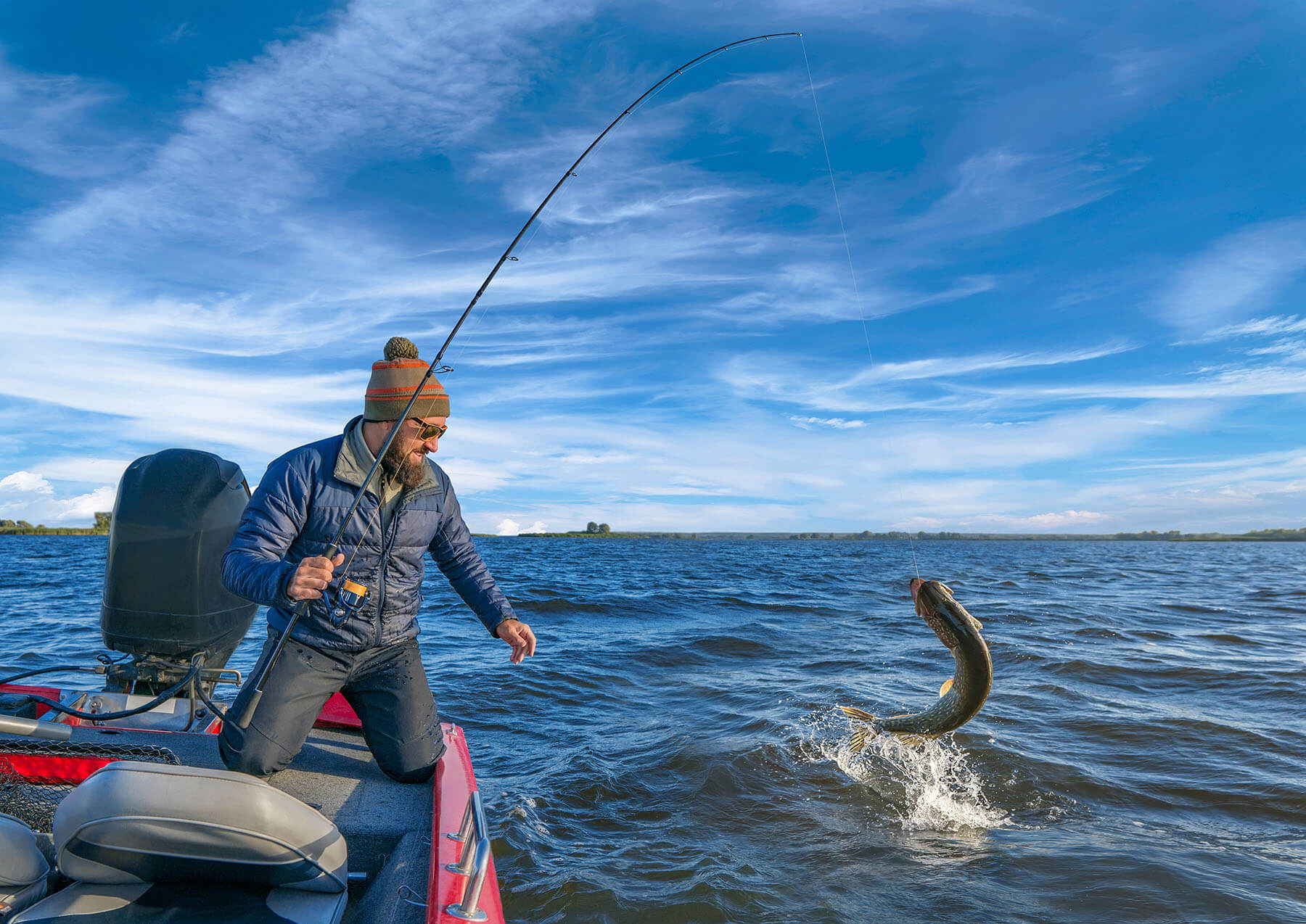If you are a fan of spin fishing, float fishing or using sinkers, the right hook should meet several requirements. The same goes for the bait itself.
Types of hooks based on the number of points
The number of points determines what type of fish you can use the hook for. The most used hooks have one, two or three points.
Single hook
Single hooks are made from wire with different diameters. Thin hooks with one point are more suitable for competitive fishing.
The most used single hook has a medium-thick wire, which easily penetrates the fish's mouth, but at the same time can hold a heavier fish.
For single hooks, it is recommended to use wobblers, spinners and spoons.
The advantage of single hooks is that they:
- do not get tangled in the net,
- are gentler to fish,
- are easy to remove,
- hold the fish better.
Always adjust the size of the single hook to the bait. Beetle imitations or smaller poppers usually only have one eye to attach the hook. There is no harm in getting a hook one size larger than the bait.
If you decide to change hooks, don't swap a treble hook for a single hook, for example. The bait may not be as effective because the weight distribution will change.
Treble hooks
Hooks with three points are usually used with most spinners and wobblers. They are primarily intended for catching large predators that require large lures (8 cm and more).
Treble hooks are produced from the size small to extra large.
Teflon coated treble hooks easily penetrate the fish's mouth. They are lighter, and their surface is smooth. However, compared to single hooks, which have a larger gap, the fish can unhook itself with less effort.
Barbed hooks
Most hooks are made with barbs, which are located on the inside or the outside of the hook curve. Their disadvantage is that they can get tangled in the net easily, damage the fish's mouth, and are more difficult to remove.
Types of hooks according to the type of fish
Carp hooks
If you go carp fishing, choose a teflon coated hook with one eye. Such a hook will not rust in the water and thanks to the eye you can tie a tighter knot, which will make it easier for the fish to swallow it.
The perfect size of the carp fishing hook is no. 4 and no. 6.
Catfish hooks
Catfish have tremendous power – especially when they are trying to get off the hook. When fishing, you need an extremely sharp double or treble hook, which needs to be sharpened when used frequently.
For catfish, the hook sizes are referred to as 1/0, 2/0 and so on all the way up to 10/0, with 1/0 indicating the smallest size.
How to choose a fish bait?
Nowadays, the market offers many different types of bait for different species of fish. However, each fish has certain "preferences" which you can use to attract them faster.
When choosing bait, focus also on the preferred method of fishing. Your goal is to choose bait that moves as naturally and "lively" as possible, or mimics an injured or ill prey.
Types of baits
- Live baits are the most popular. These include mudworms, maggots, dendrobaenna worms and earthworms. Remember that live bait fishing is not allowed everywhere – please follow the local rules.
- Fishing paste is a favourite choice. Many fishermen can make it at home as well.
- Pellets are sold in larger bags and are made from raw material of plant or animal origin. The most common shapes are balls and rectangles. They are also sold in different flavours.
- Boilies are made from boiled paste, and have a specific taste and aroma. They differ primarily in ingredients and price. Boilies have a high nutritional value – they are simply irresistible for fish. Currently, they are one of the most popular fishing baits.
- Dips and flavour additives serve to highlight the taste and aroma of individual baits on the hook. They are liquid or powdered, and you can use them for all types of bait.
- Groundbait is used to lure prey. It will attract fish to your chosen spot. Most mixtures indicate on the packaging the type of fish they are suitable for.
- Artificial lures are an indispensable part of every fisherman's equipment. However, keep in mind that the choice of a suitable lure depends not only on the underwater visibility, but also on the type of fish you want to catch.
Pike lures
When fishing for pike, reach for artificial lures which resemble a live but wounded prey. If it reminds the pike of live food, it will happily jump after it.
Go for multi-part wobblers, for example from Salmo or for rubber lures. Fishing with a spinner will be perfect.
Trout bait
The best trout baits are small wobblers, since they are most effective.
Trout also like rubber lures, which imitate different developmental stages of insects, fish or crustaceans.
They also enjoy pastes that are put on the hook itself. Fish like almost all flavours, bone meal and worms.
Carp bait
If you want to catch carp in cold water, focus on spicy aromas. If you are going fishing in the warmer months, carp will enjoy fish aromas. The most suitable alternative are boilies, which are delicious to carp – they are recommended to be used all year round.
When you go fishing in the winter months, dip the bait.
General tips and tricks
- River fish like what they normally find in their natural environment – worms or larvae.
- The fish in ponds are usually restocked, which means they are picky. When fishing, use boilies, pellets and flavoured round baits.
- If you're going fishing during the colder season, opt for less pronounced flavours. In warmer weather, reach for sweet flavours.
- One of the most popular choices is corn. You can find it flavoured in brine or in the form of boilies.
 Musical Instruments
Musical Instruments



 Water Sports
Water Sports




 default
default

